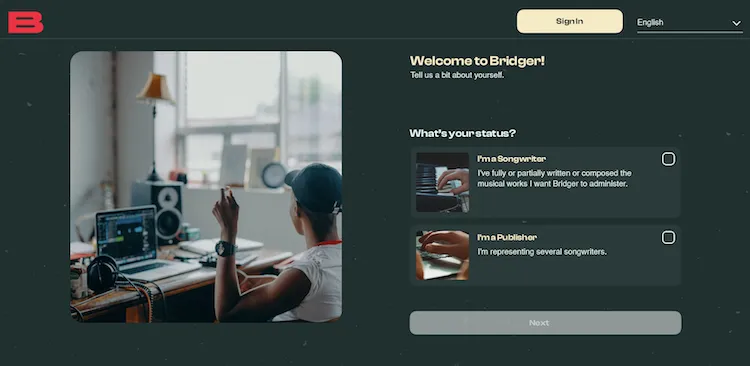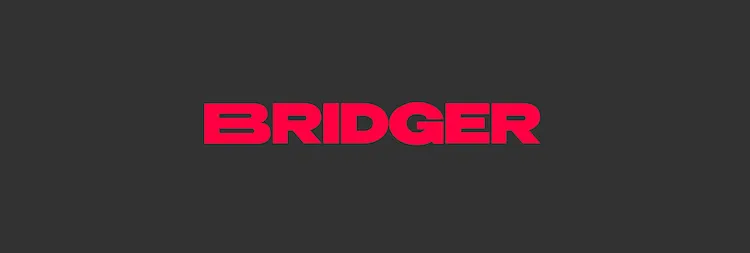Could the ‘starving artist’ cliché finally end if artists gained access to all the royalties they’re owed? For indie and DIY artists, Bridger is now aiming to unlock missing music rights while providing songwriters and publishers the avenue they need to generate revenue. It’s all happening through a modified PRO concept called an ‘Independent Management Entity,’ or IME.
In the current music industry terrain, proper artist royalty collections rely on affiliations with PROs (Performance Rights Organizations), CMOs (Collective Management Organizations), or both. These affiliations are crucial for artists to secure their rights and monetize their work. Unfortunately, for many indies, these tie-ups are simply unworkable or unavailable.
That creates a predictable problem: with a lack of affiliation with PROs and CMOs, indie songwriters and publishers generally miss out on the opportunities these organizations can offer. As a result, artists are typically only collecting recording royalties via their distributor, leaving behind potentially vast amounts of publishing-related royalties.
As a European IME, Bridger is authorized to collect mechanical and performing rights royalties directly without intermediaries. Unlike most other global distribution and royalty collection services that serve as copyright administrators, Bridger functions like a CMO for smaller, underrepresented indie artists.
Xavier Tumminello, Head of Communication at Bridger, believes that to get the money they deserve, artists need to join a PRO or CMO to help them grow their music projects and careers. But PROs and CMOs are ultimately limiting or exclusionary, which led to the creation of the IME. “We help artists boost royalty revenue by 25%. In terms of features and volume, Bridger is already the size of a small European CMO.”
So what’s the difference between a PRO or CMO on one hand, and the IME on the other? According to Tumminello, it’s simple: PROs and CMOs are typically non-profit organizations, and an IME is a business entity. Just recently, Bridger joined forces with DMN to broaden performance rights access to indie and DIY artists.
After launching in February 2022, Bridger revealed a repertoire size of approximately 35,000 works with over 700 songwriters. Bridger also recently launched a collaborative works registration feature for songwriters to register joint musical works.
Xavier notes that some talented artists have never been affiliated with any CMO because the on-boarding process requires serious hoop-jumping. Bridger has aimed to simplify that route, so artists can quickly educate themselves, affiliate themselves, and register their works “so we can represent them and collect on their behalf.”
For creators that have been disregarded by traditional CMOs but represent high volumes of streams on streaming services, Bridger can “discover the value and deliver it to artists,” Tumminello says.
The number of non-traditional artists without CMO affiliation is surprisingly large. For example, according to the company, most artists on meditation playlists get tens of millions of streams but aren’t represented by a CMO. Overall, the royalty-collection picture appears grim for creators on most platforms. “With 8 to 12 million total creators on Spotify, only 4 million members are at CISAC. And these members include duplicates because artists can be members of ASCAP and BMI at the same time. So, between 4 and 8 million songwriters aren’t receiving their royalties on Spotify alone.”

Photo Credit: Bridger
This ‘Black Box’ of unpaid millions in royalties comprises more than just indie artists.
Xavier reveals how even more prominent artists with existing CMO affiliations are missing out on potential earnings. “These artists know they deserve more than they’re receiving.”
For songwriters and owners of larger IPs that are already affiliated with PROs and frustrated with their level of royalty capture, Xavier says Bridger could potentially increase their digital revenue. “We’re not direct competitors of CMOs, but we’re offering an alternative approach to artists.”
According to the company, artists can optimize their copyright revenue by handing off their online royalties and streaming revenue to Bridger. Meanwhile, their existing CMO can continue to collect for public performances, venues and stores, malls, and traditional radio. Both organizations can exist seamlessly, side by side.
Then there’s the cross-territorial collection mess. “Copyright doesn’t travel well over the Atlantic,” Xavier says. Theoretically, the royalty-generation system breaks down almost immediately when music makes the commute out of its region of origin — because copyright laws across the Atlantic are entirely different.
For example, while the US doesn’t recognize performance rights for recordings on broadcast radio, these recordings are recognized as legitimate revenue in European countries. To top it off, artists’ reciprocal agreements with their CMOs don’t accommodate for this difference, and as a result, royalties don’t get paid back to ASCAP, BMI, or SESAC.
Xavier explains, “There is no two-way street for royalties across the Atlantic. No payment is coming back because the reciprocal agreement isn’t actually reciprocal.”
It’s common for IP owners to receive paltry paychecks even when big things are unfolding in the music world. Xavier says Bridger focuses on making sure that artists’ digital copyrights are collected at the source, across the Atlantic. “If you’re in the US, you should look at a European solution for Europe. And if you are in Europe, you should look at a US-based solution in the US. Don’t rely only on reciprocal agreements and always question how you deal with your IP in Western countries.”
Xavier admits that big publishers are on top of their game and have efficiently fragmented the market to ensure they get the most out of it. But when one goes down the ladder, music royalty payouts become complicated.
Artists dealing with these issues and frustrations need an obvious and easy solution to accelerate payments, take control, and claim revenue faster. Bridger’s bigger aim is to establish the system that will trigger change within the PRO/CMO landscape.
Xavier believes that the nature of Bridger’s agreements with DSPs allows it to do things differently. For its artists, Bridger can claim royalties up to two years before the artists’ affiliation. The platform is free to join, without any subscription or annual fees, which allows indie artists to start collecting royalties without any upfront payment. He adds, “When you’re starting out and know nothing about copyright, you’re reluctant to pay upfront. We’ve removed that barrier between artists and their affiliation with Bridger, so they can collect their rightful royalties.”

